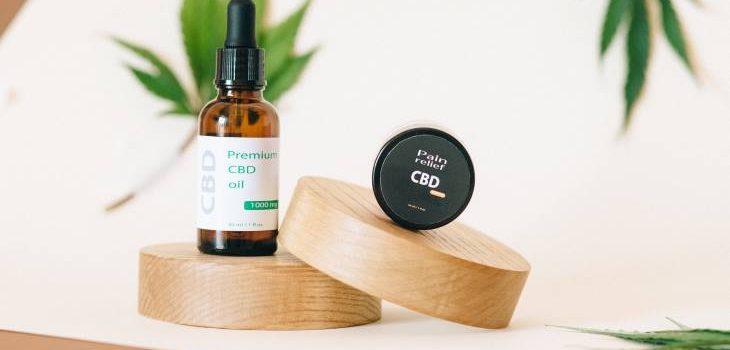Since the legalization of cannabis in Canada, we are now easily able to open up a discussion about its therapeutic benefits, which is particularly exciting for the senior population. According to the CDC, about 65% of Canadians aged 40-79 have used at least 1 prescription medication in the past 30 days, with almost 20% taking at least five. When looking at the senior population (65 years and older) specifically, the numbers are even more staggering with nearly two thirds being prescribed 5 or more classes of drugs and a shocking 26.5% being prescribed 10 or more. Among lipid-lowering drugs, proton pump inhibitors and analgesics, the Canadian Institute for Health Information sites opioids and anti-anxiety/antidepressants also breaking the top 10 most commonly prescribed pharmaceuticals to seniors.
When we take into account the concerning statistic that seniors who are prescribed 10-14 different drug classes are 5 times more likely to be hospitalized for adverse drug reactions than those prescribed 4 or less, and that seniors with multiple chronic conditions are having to take multiple different classes of drugs to manage them, we must ask ourselves, is there a better way?
CBD Use for Management of Multiple Conditions
With the broad spectrum of therapeutic benefits of Cannabidiol (CBD) now being popularized, there is a potential bright light for senior citizens having to take multiple prescription drugs. Anxiety, seizures, insomnia, pain management, neuroprotection, and cancer care are among just a few of the benefits of CBD use currently being studied. Due to the overlapping benefits with the most common prescriptions among seniors, there is no doubt that the multi-functional effects of CBD make it a promising front-runner to reduce the incidence of so many different drug classes being prescribed (along with the associated adverse reactions).
Is CBD As Effective As Pharmaceuticals? Is it Safe?
The efficacy of any substance depends on the condition being treated, the dosage, and quite frankly, the person. We mustn’t forget that the use of CBD in therapeutics is still relatively new, but when HelloMD teamed up with Brightfield Group is one of the current largest CBD usage studies, they found that 42% of users opted for cannabis products versus their traditional medications, and a whopping 80% of users found CBD to be very or extremely effective for their treatment purposes.
It’s also important to keep safety in mind. When reading a list of side effects, it’s not uncommon to see “increased risk of heart attack or stroke, potentially fatal bleeding, sudden vision changes, slurred speech, etc.” alongside a pharmaceutical drug. When given the choice, patients tend to prefer the rather short list of potential minor (and relatively uncommon) complications of CBD products, such as
- nausea
- fatigue
- appetite changes
- irritability.
Must Knows About CBD Products
If you or a loved one is looking to try CBD products, there are a few things you should know. Dry cannabis is the physical flower of the cannabis plant that has been dried, cured, and is ready to smoke. CBD is a naturally occurring compound found within the cannabis flower and is a safe, non-addictive substance classified as one of over a hundred different phytocannabinoids which give the cannabis plant its broad therapeutic value. CBD can be extracted from the flower and placed in a carrier oil (with or without other phytocannabinoids) to be delivered in multiple formats, such as oils, capsules, vapors, edibles, and topicals.
CBD oil is one of the most common forms, with the product being sold in 30-60 mL bottles containing 300-3000 mg of CBD per bottle. Prices for oils typically range from $70-$240, and this often depends on the type of oil (full spectrum, broad-spectrum, or isolate) and the overall quality of the product (ex. organic, lab-tested, third party tested, etc.).
Are Cannabis Products Covered By Insurance?
Multiple insurance companies in Canada are now offering coverage for medical marijuana use – Manulife and Sun Life being a few examples. If you are not covered by a benefits plan, cannabis is an eligible medical expense under Revenue Canada’s Medical Expense Tax Credit as well. That said, this coverage extends specifically to medical use of cannabis products (not recreational) which means you have to receive products from an approved Health Canada-licensed producer and have a prescription.
Even though cannabis products are legal, having a prescription is still worth it for many reasons, including guidance being provided on use and dosage from physicians, direct supply chains, and being able to medicate as needed without the worry of being fined in public areas. Getting cannabis products medically prescribed is becoming accessible now too. Greenleaf, Apollo Cannabis Clinics, and MedicalMarijuana.ca are all Canadian services that connect patients with healthcare practitioners that can provide education, information, and access to medical cannabis use.
Conclusion
The legalization of cannabis in Canada was a milestone that truly changed many aspects of our country, including healthcare. The fact that the cannabis plant has multiple therapeutic benefits and can be used successfully alone or in combination with other pharmaceuticals is massively promising in that it may reduce the number of medications prescribed per patient, reduce the risk of adverse events from pharmaceutical use, all while giving people a generally safe, natural option for treatment.
We can’t underestimate the value that CBD and cannabis products provide to the general population, but especially to senior citizens and others who may be taking multiple pharmaceutical medications.


[email protected] says:
Thank you for the information.